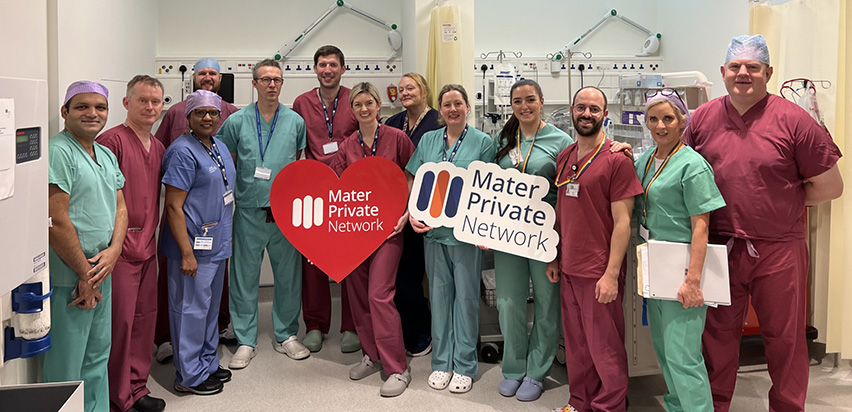Vascular Lab
Contact Us
Request an AppointmentPlease note that a referral letter is required before an appointment can be confirmed.
Please note that a referral letter is required before an appointment can be confirmed.
Useful Information
About our services
At the Vascular Lab we use non-invasive painless tests, such as diagnostic ultrasound and segmental pressures/pulse volume recordings to discover whether a patient may have an arterial or venous vascular disease (disease of the veins and/or arteries), and if you do, how severe the disease is. Patients are usually referred to the Vascular Lab by your GP or consultant and the tests are carried out by one of our vascular physiologists (specialists in the diagnosis of diseases of the veins and arteries).
We carry out the following tests in our lab:
- Carotid and vertebral artery duplex
- Abdominal aortic duplex / abdominal aortic aneurysm screening
- Varicose vein duplex
- Lower limb deep venous duplex (DVT)
- Ankle-brachial index testing (ABI) and toe pressure index (TBI)
- Exercise testing
- Lower limb arterial duplex
- Upper limb arterial pressures
- Upper limb arterial duplex
- EVAR surveillance
- Post operative graft
- Pre-op assessment for arteriovenous fistula (AVF) formation
Carotid arteries bring blood and oxygen to your head and brain. Carotid artery disease is a serious condition where plaque (made up of fat, cholesterol, calcium, cellular waste matter and fibrin) builds up in the arteries, causing your arteries to narrow, and unstable, active plaque to form, and putting you at risk of transient ischaemic attacks (also known as mini-strokes or TIAs) or strokes.
The carotid and vertebral artery duplex scan is used to identify the amount and type of plaque in your arteries. It is often carried out:
- Before surgery
- If a patient has had a stroke or TIAs
- For follow-up after surgery or stenting of the carotid arteries
No special preparation is needed. The scan is non-invasive and painless and we do it in a quiet, darkened room while you are lying on your back. We apply gel to your neck, and move the ultrasound scanner up and down the gelled area. The scan usually takes 15-30 minutes.
The abdominal aorta is the largest artery in the abdominal cavity (the area that houses your stomach, kidney, colon, appendix, liver, gallbladder and spleen). We use ultrasound to scan the aorta to see whether your artery has an abnormal bulge, known as an abdominal aortic aneurysm, or AAA. Patients who have an AAA may need to have regular ongoing scans to monitor the aneurysm to see if it is growing and if so, at what rate.
The scan is non-invasive and painless. You will need to fast for approximately four to six hours before your scan which will take place in a quiet, darkened room. When you are lying on your back, we will apply gel to your abdomen and examine the arteries in question to look for bulges or obstruction, and will record the size and location of any aneurysms found. The scan usually takes 30 minutes.
We use this ultrasound scan to examine the veins in your lower limbs, and to detect and map varicose veins. Your vascular surgeon relies on this information to make decisions about the best treatment options for your needs.
The scan is non-invasive and painless. You will be asked to remove clothing from your legs, leaving your underwear on. While you are standing position we will apply gel to your skin and move the ultrasound scanner over your leg. During this process, one of our physiologists will squeeze your calf regularly to help identify problem areas. When only one of your legs is being examined, the scan will take up to 30 minutes. Both of your legs can be scanned during the same examination if necessary, which will take longer.
Deep vein thrombosis (DVT) happens when a blood clot (thrombus) forms in one or more of the deep veins in your body, usually in your legs. DVT can cause leg pain or swelling, red or discoloured skin on the leg and a feeling of warmth in the affected leg, but it can also have no symptoms.
Lower limb deep venous duplex is used to assess the deep veins of your legs and to check for DVT. If DVT is identified, we will document the site and extent of the blood clot.
Duplex ultrasound is the gold standard method for the detection and follow up of DVT. The scan is non-invasive and painless and we do it in a quiet, darkened room while you are lying down on an examination couch. You will be asked to remove the clothing from your legs, leaving your underwear on. We then apply gel to your skin and move the ultrasound scanner over the area to identify any clots.
Ankle-brachial index and toe pressure index testing is used to assess the arteries of your leg for atherosclerosis (disease and narrowing of the lower limb arteries). If you have significant narrowing or blockage of your leg arteries you are likely to experience claudication, which is pain or cramping of the buttock, thigh or calf when you are exercising.
If the blockages are severe enough you may have pain in your leg and foot even when you are at rest and sometimes suffer from wounds on your leg or feet that will not heal, leading to ulcers or gangrene. Claudication can be confused with other medical conditions such as back or sciatic pain. The ABI /TBI test can clarify whether the pain is caused by claudication and peripheral arterial disease or not.
ABI /TBI is a non-invasive test which involves measuring blood pressures in your arms, legs and toes. We examine you in a quiet room while you are lying down on an examination couch.
We ask that you wear clothing that will allow us to put the blood pressure monitor cuffs onto your arms and lower legs. You should take any blood pressure medication and all other medication as usual on the day of exam which will take approximately 30 minutes.
Note: Exercise testing (see below) is often performed at the same time as resting ankle-brachial index testing (ABI) toe pressure index (TBI).
We carry out this test if your ABI / TBI result is normal at rest but you experience leg pain while exercising (intermittent claudication ). If your ABI result is abnormal after exercising, this tells us that you are likely to have arterial disease. If it is normal, you are unlikely to have arterial disease.
You will be asked to walk on a treadmill for five minutes or as long as you can comfortably walk or until your symptoms become too uncomfortable to continue. After exercise your arm and ankle pressure will be immediately measured. If you have any difficulty walking, please inform the physiologist prior to the treadmill test. This test can be varied depending on the patient’s level of fitness, and will take approximately 30 minutes.
Peripheral vascular disease (PVD) is the most common disease of the lower limb arteries. PVD is the thickening or hardening of the arteries. It is caused by a build-up of plaque in the inner lining of an artery. Plaque is made up of deposits of fatty substances, cholesterol, cellular waste products, calcium, and fibrin. As it builds up in the arteries, the artery walls become thickened and stiff, a condition called atherosclerosis. The build-up is a gradual process. Over time, the artery becomes blocked, narrowed, or weakened.
We use the lower limb arterial duplex scan to check the arteries of your leg for atherosclerosis and also to check for any abnormal bulges which are a sign of an aneurysm. If we find an aneurysm, this scan also allows us to measure it.
Your examination takes place in a quiet, darkened room. We will ask you to remove your clothing from your legs, leaving your underwear on, and to lie down on an examination couch. We apply gel to your skin and move the ultrasound scanner over your leg. We then examine the images that are produced to check for obstruction and atherosclerosis (hardening and thickening of the artery walls).
When only one of your legs is being examined, the scan will take up to 30 minutes. Both of your legs can be scanned during the same sitting if necessary, which will take longer.
This is a non-invasive diagnostic study used to evaluate perfusion (the flow of blood to an organ or tissue) to the upper limbs. Blood pressures are measured in the arms and fingers to assess for disease and vascular abnormalities.
We ask that you wear appropriate clothing to allow for easy exposure of the arms and fingers so that we can easily put on the blood pressure cuffs. You will be examined while sitting with your arm supported on a pillow. Please take your blood pressure medication and all other medications as normal on the day of your examination which will take approximately 30 minutes.
This is a non-invasive diagnostic study used to assess the arteries in your arm for atherosclerosis (disease and narrowing of the arteries) and also for abnormal bulges or aneurysms. If we find an aneurysm, the scan also allows us to measure it.
Atherosclerosis in the arm is less common than in the legs, and is more likely to be experienced by diabetic and renal patients.
You do not need any special preparation for this examination.
You will be examined either lying or sitting with your arm supported on a pillow. We assess each of the five arteries in your arm for obstructions, and for any signs of stenosis (narrowing or restriction of a blood vessel or valve). If stenosis is found, we record the site and degree of stenosis. We also record and measure any bulges or ballooning (aneurysm) found. This examination will take approximately 30 minutes.
If you have an abdominal aortic aneurysm (AAA) you may have an endovascular aneurysm repair (EVAR). Following the repair the EVAR graft must be assessed for patency (obstructions) and leaks at regular intervals.
We use an ultrasound scan to do this. The examination is non-invasive and painless. You will will be asked to fast for four to six hours before the time of your examination, which will take place in a quiet, darkened room. While you are lying on your back, we will apply gel to the abdomen and examine the relevant arteries.
The examination takes approximately 30 – 60 minutes. Resting ABI studies are often performed at the same time.
Ultrasound imaging of peripheral artery bypass grafts is done to determine how well they are working and whether there are any areas of stenosis (narrowing). The arteries may also be assessed for aneurysmal bulging and intraluminal thrombus (blood clots) or plaque.
Ultrasound scans of bypass grafts are usually performed every three or six months.
The examination takes approximately 30 – 60 minutes. Resting ABI studies are often performed at the same time.
We use ultrasound to check the suitability of the upper limb arteries and veins for AVF formation prior to surgery. If necessary we can check the fistula for narrowing or blockages following the surgery.










